Whilst you’ll still find ghostly goings-on here at ZME manor, they come accompanied with rational scientific explanations and reference to the well-evidenced the laws of physics.
This is a haunted house where gravity grounds goblins, thermodynamics fights Fetches, physics faces down phantoms, mathematics melts muck-men, quantum confronts Qiqirns, and science lays the smackdown on spooks.
As you pass through the dusty halls of ZME Manor, abandoned for decades, you will also get the chance to observe a gallery of questionable ghostly images, some conclusively debunked, others still open for interpretation.
So, sign your waiver, prepare yourself for unknown frights, and enter the house that drips science.

Arrival at ZME Manor: What is a Ghost?
It’s an ideal night for a ghost hunt, you think, as you pull up to ZME manor. Lightning forks through the sky and the rain lashes the overgrown grounds of the manor. As you exit your car you are in a philosophical mood. You don’t really give much thought to the paranormal, outside the odd horror film. You wonder to yourself exactly what is a ghost, and why are we so fascinated with the idea of life after death?
The idea of a person’s spirit surviving death and returning to be glimpsed by the living is something that is rooted in almost every culture, thus it’s extremely hard to come up with a conclusive answer to these questions. Once portents of doom, death and disease, carrying warnings from beyond the grave, or attempting to finish business left unfinished in life, ghosts have also found an interpretation in modern scientific culture.
One might expect that more enlightened times, in which more people than ever are aware of the principles of science, belief in things like ghosts would fade away like the proverbial spectre. But, that hasn’t been the case.
A recent YouGov poll showed that ghost belief is particularly prominent in the UK, with 1 in 3 British citizens saying they believe in ghosts. Compare that to less than 1 in 4 who claimed to be religious.
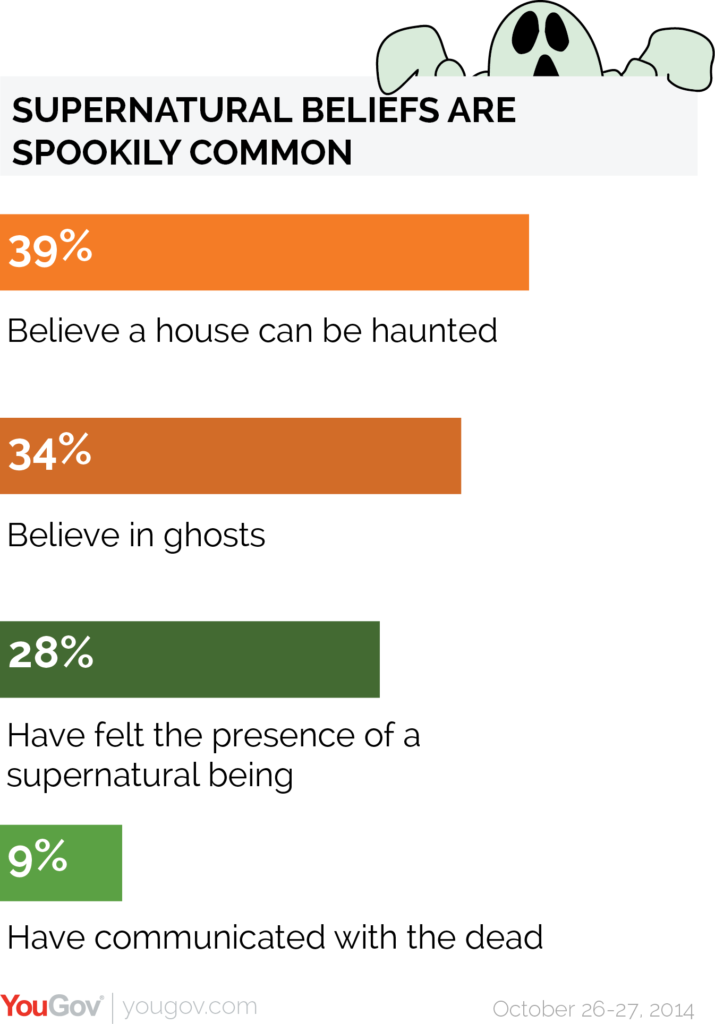
Ghost hunters who claim to operate scientifically offer several modern definitions of a ‘ghost’ — one of the common features of these scientific spooks is the idea of a person’s ‘energy’ surviving after death. If that sounds a bit woolly and ill-defined, that’s because it is.
There are some common qualities of ‘ghosts’ that most paranormal enthusiasts agree upon.
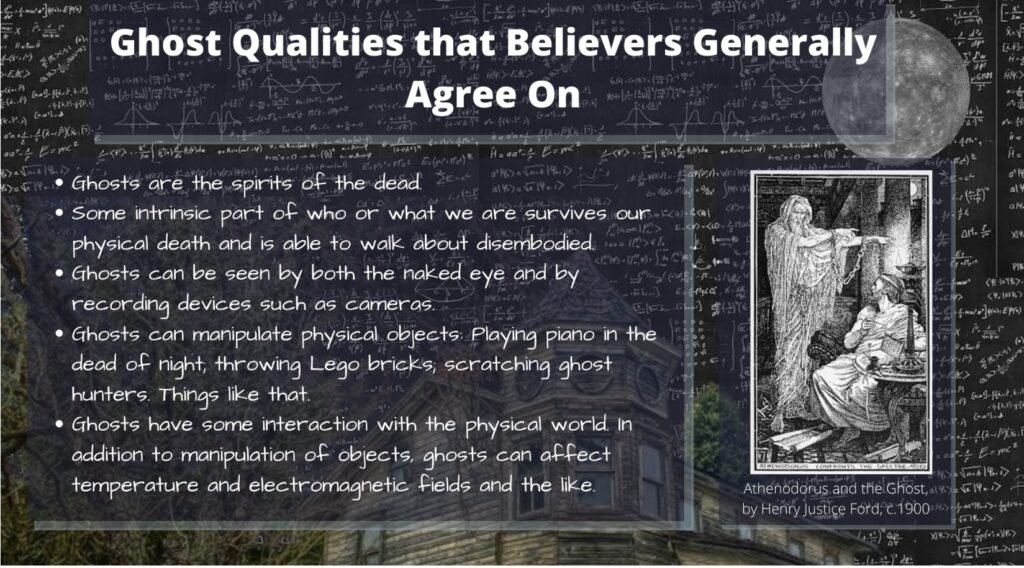
With those qualities in mind, we can start to see if science can offer a way to ‘debunk’ them.
One of your ghost hunt companions joins you on the porch. You vaguely recognise his face. To your surprise, you realise you’ve seen him running around in the dark on one of the multitudes of ghost hunting TV shows that haunt your television after 10 pm on a Wednesday night.
Who better to ask about ghosts?
“Good question,” the ghost hunter, who introduces himself simply as ‘Nick’, says in a most self-assured way. “Energy can’t be created or destroyed; it can only change forms — that’s a law of physics. Not a theory of physics — a law. It’s called the law of conservation of energy.
“It means that if you take an isolated system, such as a person, the energy contained in that person can’t be destroyed. It can change forms from chemical energy — like the signals that travel down your nerve pathways — into kinetic energy, the energy required to move your arm, for example, but the energy is always there.“1
The Hallway: Elaborating on energy
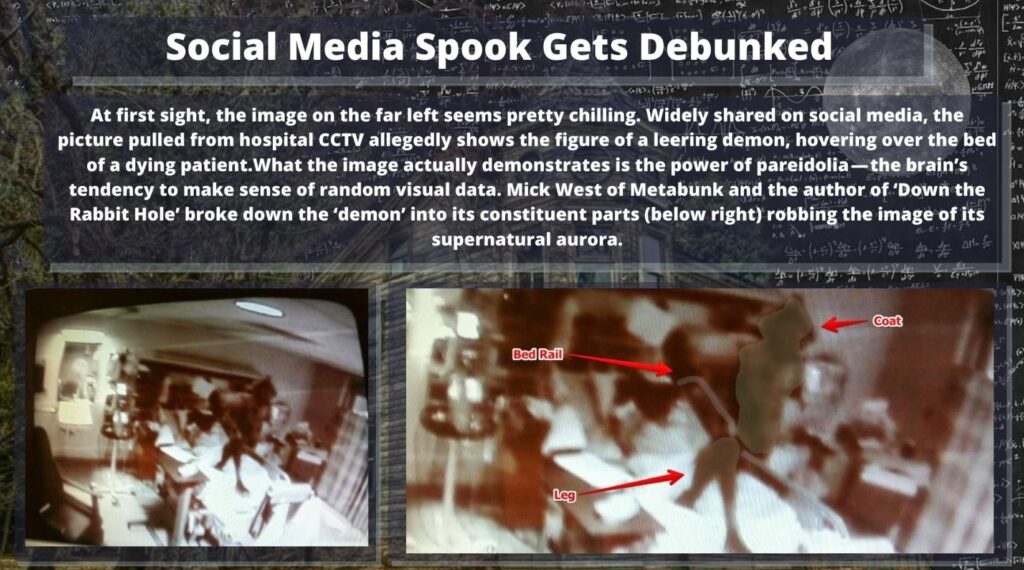
“This law makes sense to me,” says Nick smiling at you as he opens the door, and strides purposefully into ZME Manor. “It means that when we die, our energy must go somewhere. The flesh and bones — the empty vessel — is left behind, but the energy survives.”1
As a third figure steps up to the porch, as you follow the ghost hunter through the doorway into the impressive, if deteriorating, main hallway. You are just thinking that his explanation kind of makes sense, you know Einstein’s theory does say that energy can’t be created or destroyed, so what about the energy that makes up ‘you’? Where does that go?
“Nick is quite wrong you know,” says the third hunt participant, giving you something of a start. You hadn’t noticed the young woman, short and quite unassuming, thus far, and she has followed you silently into the cavernous hallway. “Einstein’s theory of mass-energy equivalence does say energy can’t be created or destroyed, but it’s a bit more complicated than that…”
The big difficulty with the rationalisation offered by Nick and other ghost hunters as it doesn’t really consider what the energy that makes up a human being actually is.
Energy is a property of matter that is used to do work on a system. If we want to change the state of a system we put energy into it. We are aware of the forms energy takes, electrical, nuclear, chemical, heat, kinetic and potential (stored) energy being the main types we encounter every day.
Nick, our ghost hunter, is correct when he says energy cannot be created or destroyed, only converted, but when we consider that statement we must bear in mind the forms energy takes in our body. This is where Nick starts to go wrong.
Our bodies aren’t thermodynamically isolated systems. An isolated system, such as the one described by Nick, cannot exchange either matter or energy with its environment. Clearly, we do both, and in both directions. We absorb both matter and energy and pass it into the environment, energy via heat and matter via… well… you know. When we die, this process only halts in one direction. We stop taking in matter, but our bodies continue to expel heat until we’re in thermal equilibrium with the environment.
As for the rest of the energy that comprises us?
Grim though it may be, why should we suspect that our carcass is any different to the animal matter many of us consume? The chemical energy in ‘you’ goes back into the food chain. Not very romantic. But true.
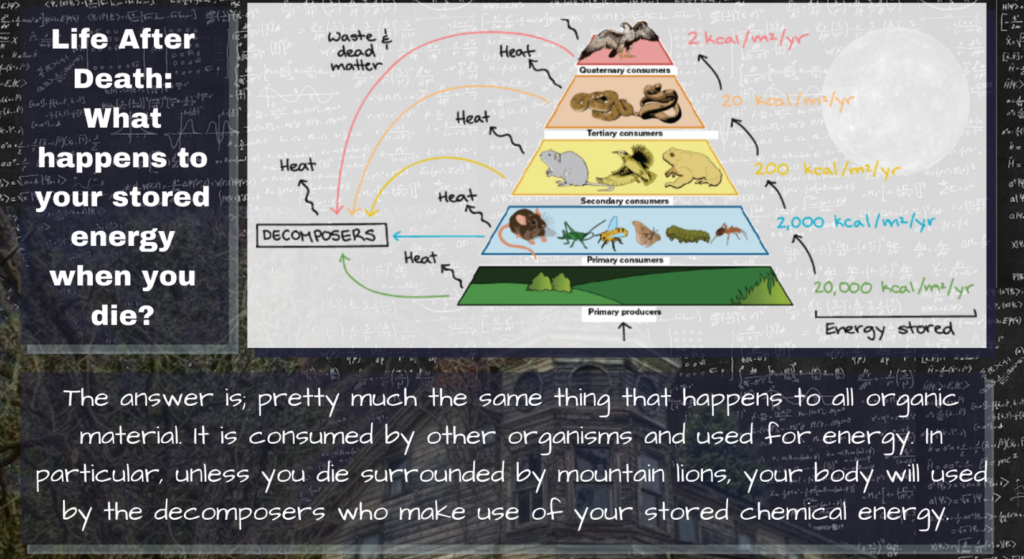
“Well, that’s food for thought. Thanks!” you chuckle. The young woman flashes a mischievous smile, her green eyes twinkling. She then moves off to inspect some very complicated scientific doodahs that Nick is unpacking from over the ghost hunter’s shoulder. He pays her no attention, continuing his unpacking.
Nick calls over to you. “Hey, you. Why don’t you check out one of the rooms down here? That one maybe.” He points to an imposing oak door. You move closer and inspect the carvings of goblin-like faces etched into the wood.
“Erm… Sure…” you reply somewhat trepidatiously. And look back to see if Nick and your other companion noticed your wavering voice. The ghost hunter pays you no mind, but the young woman smiles back sweetly. Somewhat buoyed by this, you grip the handle and push.
Here goes…
The Library: You’ve got Chills, they’re multiplying…
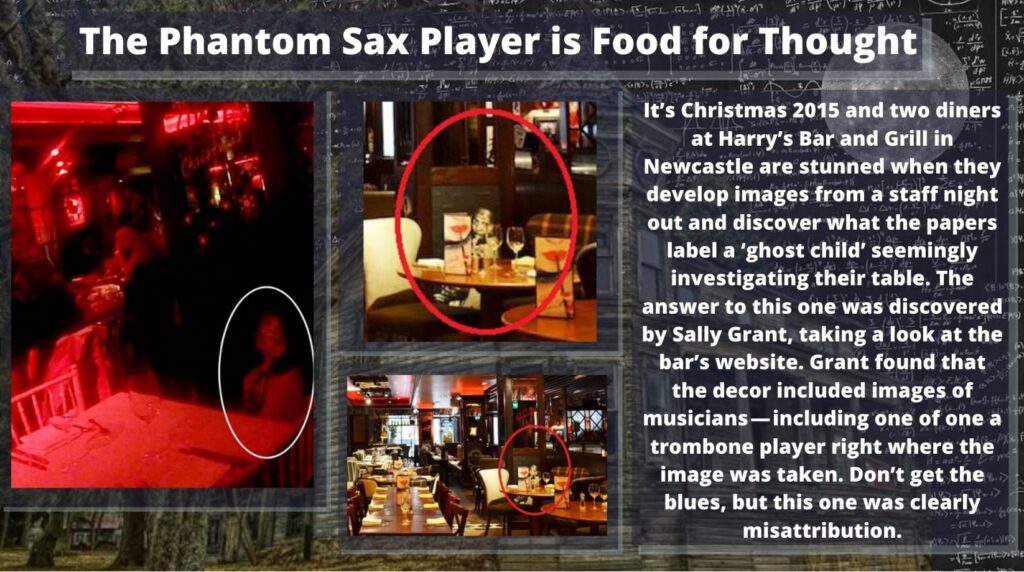
The door swings open much more freely than you you were expecting, it’s huge weight not impeding its operation one bit, nor does it’s age or apparent disuse. Beyond the door lies row upon row of oak shelves, filled with ancient books. Your senses are overwhelmed with the smell of damp and musty paper.
Unperturbed by the smell, you navigate your way around a well-worn armchair and circular table and move down the shelves of books. You grip your coat tighter, as you approach the shelves. The temperature has dropped considerably.
“Coldspot,” Nick sniffs, with the air of a mechanic who has found a problem with your car that he’s amazed that you, a grown adult who drives the vehicle, has missed. “One of the most common signs of paranormal activity. Everything that enters an environment, even ghosts, change it in some way. When we move and breath we stir up the air around us, our collective body temperatures raise the temperature.
“The most common theory for why cold spots occur is when a ghost is in an area they use the heat in order to manifest.”
Nick moves away pointing a laser thermometer at the far wall. Your other fellow ghost hunter takes up space he previously occupied. “Of course,” she smiles again. “That’s not how thermodynamics works…”
Let’s say we have our free-floating blob of “vital energy” or ghost if you prefer, there’s going to be a pretty immediate restriction placed on that energy. If it manages to stay in one compressed form the second law of thermodynamics states that the amount of useless energy within that lump–its entropy–is going to grow.
Every time our spook startles a photogenic ghost hunter on a syndicated US TV show by throwing something, or slowly shutting a door, it’s going to lose energy. Furthermore, the energy our spook holds on to is going to become gradually more and more useless. To keep its structure, the ghost would have to convert energy from its surroundings. This is something that should be measurable and demonstrable, and yet no-one has either measured or demonstrated it as of yet.
Therefore, ghosts would need a pretty much constant source of energy to remain ordered. Nick and many other ghost hunters claim that cold-spots represent just such an attempt by a ghost or spirit to draw energy from its surroundings.
The problem with this is that according to the zeroth law of thermodynamics, heat is only exchanged between a colder body and a hotter one until a thermal equilibrium is reached and both bodies are at the same temperature.
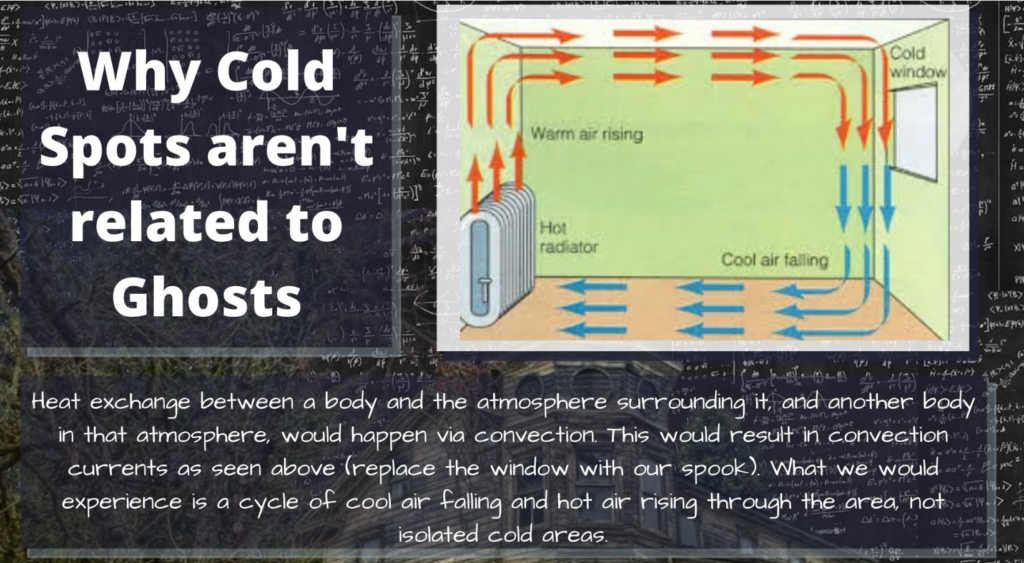
The principle of thermodynamic equilibrium simply doesn’t allow for heat to be drawn at will in a limited area, the exchange of heat would spread to all areas in thermal contact with a smaller region.
“A far more likely explanation for cold spots are draughts,” the young woman explains with a smile. “The feeling of cold is not actually due to temperature as such, but the rate at which heat is drawn from us, a far more likely explanation for a sudden cold sensation is exposure to a column of frigid air.
“Thermodynamically speaking, heat is often associated with entropy as it’s not a usable form of energy. Heat is generally an end product of various thermodynamic processes, the final energy transformation.”
“Makes sense,” you think, as your companion moves off to inspect the staircase outside the library. Before climbing the stairs she turns back to the doorway and points in Nick’s rough direction. “Also, you might want to tell Nick, that laser thermometers don’t work like that. He thinks he’s taking the temperature of the middle of the room when he’s actually measuring the temperature of the point the laser is shining on!”
You turn and look, sure enough, you tell from the red spot like an assassin’s target shining on a far wall that the laser is moving through the centre of the room and bouncing back off that wall. Nick notices you watching. “Yup, definite coldspot right here!” he says pointing at the centre of the room. You just smile and then carefully follow your other companion up the stairs, registering the creek of the wooden steps as you do.
The Staircase: Every Step you take…
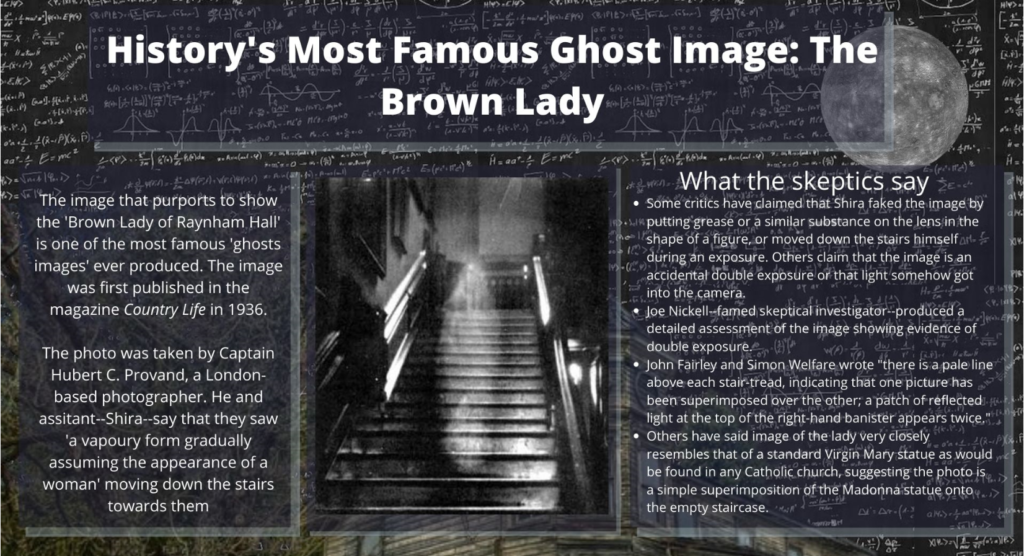
After climbing the stairs you round the corner and see a corridor with several rooms branching off it. Your companion is nowhere to be seen, so she must have ducked into one of these doors.
You hear a bang and a muttered swearword from the library. Nick is still inaccurately measuring temperature is the room. As you are about to try the first door, you freeze. Another sound sends a figurative chill through your heart.
A creak from the stairs– the same as you heard when you climbed the staircase. Another. Then yet another. Someone is climbing the stairs, and you know it isn’t you or any of your companions.
You duck into the first bedroom and shut the door. As you lean against the doorframe, you hear slow but deliberate footsteps in the hallway…
Ghostly footsteps are one of the most commonly reported ‘haunting phenomena.’ Ignoring the fact that these footsteps usually have very rational explanations for the moment, the concept raises the question; what do the laws of physics say about how ghosts could move?
Newton’s First Law states that an object will remain at rest or in uniform motion in a straight line unless acted upon by an external force. Therefore, from this, we can gather that for a ghost to begin to move, there must be some force acting on our spook.
You and I move by applying a downward force on the floor, which in turn applies an equal and opposite force on us according to Newton’s third law, which states: “For every action, there is an equal and opposite reaction. The statement means that in every interaction, there is a pair of forces acting on the two interacting objects. The size of the forces on the first object equals the size of the force on the second object.”
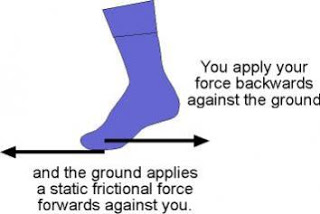
It wouldn’t be unreasonable to assume ghosts move in the same way. In support of this, there are accounts of experiencers seeing spirits walking through hallways or up staircases in addition to hearing ghostly footsteps. Ghost hunting groups often advise spook seeking amateurs to detect ghost pathways by dusting surfaces with flour or other fine powders to detect footprints. This leads us to conclude that the ghost must be material, as it is the only way they could exert the required force to propel themselves.
But, if they are material and able to interact with matter, how can they suddenly turn intangible?
To your horror, the door handle begins to turn. The hair stands up on the back of your neck as the door swings open. “You in ‘ere?” says Nick. You find yourself surprised to actually be happy to see him.
After your nerves settle, you explain your story to Nick. “Yup, definite activity there,” he mumbles clearly not that impressed with your experience. He continues off down the corridor trying doors.
As you poke your head out of the door, your more science-minded companion, the young woman joins you. She clearly has excellent hearing as she seems to have heard the entire conversion. “Of course,” she begins. “The ‘ghostly footsteps’ people hear usually have some very rational explanations. For example, houses absorb a lot of heat during the day, and as they cool at night, contracting materials can cause a lot of bumps and creaks.”
With regards to the staircase, she adds: “One of the most common causes of footsteps on the stairs is an adjoining building having a staircase positioned next to the one from which the footsteps seem to be coming from.”
“By the way,” she adds. “Why did you close the door when you hid in the room? Ghosts can just walk through walls, right?” She gives me a comforting wink and drifts down the hall. I notice the floorboards don’t creak when she walks over them.
I exit the doorway quickly, leaving the door open.
The Upper Floor: It’s Just a Phase…
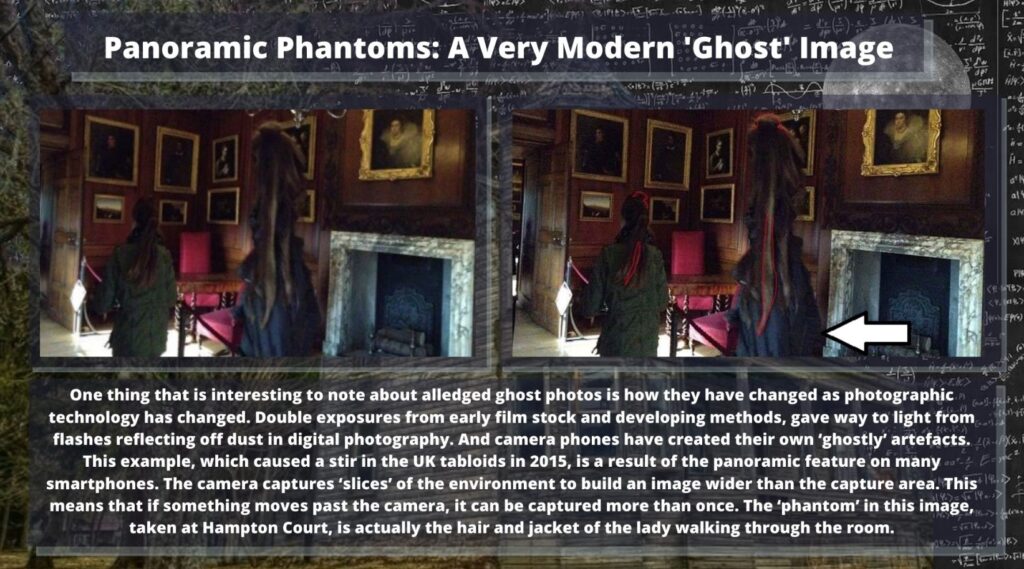
You catch up with Nick. “So how common is it for ghosts to be seen just walking through walls?” I ask the ghost hunter who is waving around an EMF meter like a kid playing Ghostbusters in the school playground. “Oh, very common. You see,” he adds professorially “ghosts don’t follow our floor plans. They follow the floor plans that the building had when they died. That means if there wasn’t a wall there when they were alive, they just ignore it like it isn’t there now.”
Nick goes on to explain about The Grey Lady of Gainsborough Hall. “Sightings of the Grey Lady walking the Ghost Corridor have been part of local legend from before the Victorian era. Dressed in grey and in Tudor style, the grey lady walks the length of the corridor and turns right before the end to disappear through a wall. In the 1960’s the lath and plaster were removed from this wall revealed a Tudor doorway — at the exact spot where the grey lady walks through the wall!”2
As Nick continues down the corridor, the young passes me and says with a smile: “I guess the ‘Grey Lady’ never heard of the Pauli Exclusion Principle!”
The Pauli exclusion principle is the facet of matter that forbids particles known as Fermions, including protons, neutrons and electrons, from cramming into the same state defined by four principle quantum numbers.
That’s exactly the kind of ‘cramming’ that phasing would require. In addition to this, even though most of an atom’s volume is technically empty space (a popular analogy being a football placed on the center circle of a football stadium representing the nucleus and a fruit fly orbiting the outer wall representing an electron), that “empty space” is filled with electromagnetic force.
It’s the repulsion between these forces that forbids matter from passing through matter. The reason you don’t fall through the floor into the center of the Earth is a result of the electromagnetic repulsion between the electrons in your atoms and those in the ground.
Thus, phasing on a macroscopic scale isn’t possible.
If ghosts are material, they can’t possibly pass through a wall as an immaterial object, otherwise logically they would just pass through the floor, even if this can be controlled at will, a ghost would have to be simultaneously material and immaterial in order to both exert force on the floor and pass through the wall at once.
The ability to pick up and interact with objects like doors is another aspect of ghost accounts that would require them to be physical material objects consisting of atoms. To move, pick up or interact with an object there must be friction.
Friction is generated when two surfaces move against each other, again requiring that our spook is composed of physical matter. Ghost hunters and believers, in general, seem to have no objection to the physical nature of ghosts, but the ability to interact with the physical world comes at a price; restriction to the known and well-established laws of physics.
I catch up with the young woman who is examining a dusty portrait on the wall. “But wait! Isn’t energy and matter interchangeable according to Einstein’s energy/mass equivalence. Couldn’t ghosts quickly switch between matter and energy, so after they interact with matter they quickly flip to energy and pass through it?
She turns and fixes me with piercing green eyes. “Boom!”
“Boom?”
“BOOOOOOOM!” she gesticulates a theatrical explosion spreading her arms wide and then steps into the master bedroom.
The Master Bedroom: Ghosts go Boom!
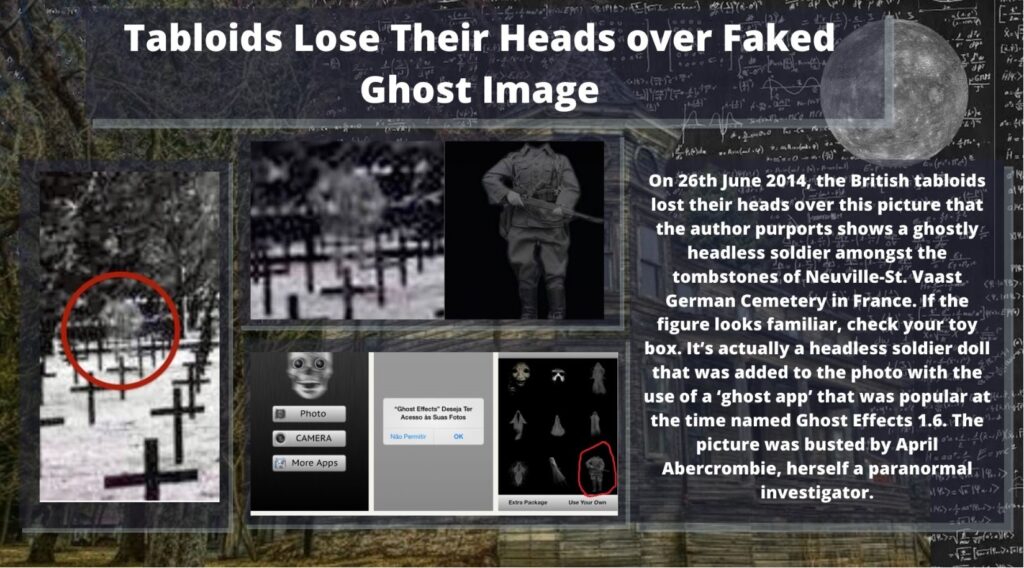
I observe the master bedroom. Despite its undeniably old-fashioned decor, the room is remarkably well preserved. I could easily imagine the owner of the house had slipped out of the bed that very morning. For a brief moment, I worry that he or she could walk into the room at any moment, angered by the presence of two intruders in their bed-chamber, despite the fact the house’s owner has been dead for decades. I dismiss the thought with a shiver.
“So ghosts would explode?” I ask my companion. She smiles at my question and raises a finger as if to make a point. “Think about another example of mass quickly changing to energy.”
I search through my knowledge of high school physics. “The atom bomb?” It’s more of a further question than a definitive answer.
“Exactly!” she responds with a flourish spreading her arms wide.”Boom!”
When considering Einstein’s energy/mass equivalence, it’s important to understand that it doesn’t state that MATTER and energy are interchangeable, but that MASS and energy are interchangeable.
Both energy and mass are properties intrinsic to particles. When mass and energy are interchanged, the matter associated with the mass is annihilated. Also, the factor involved, the speed of light squared, c² (9.0 x 1016 m2 / s2 ) ensures that the tiniest amount of mass yields a huge release of energy.
Let’s consider a ghost that has enough mass to open a door pulling a disappearance act as they are prone to do, and assess the typical amount of energy that would be released as our phantom disappears.
Assuming our ghost has the same mass as the average US female–roughly 74.4kg — If the dematerialisation represents an instant switch between mass and energy, just how much energy would be instantly released?
“About 6.7 x 1018 Joules,” the young woman interjects. “To put that into perspective, the nuclear weapon that devastated Hiroshima released 6.3 x 1013 Joules. So a ghost switching between mass and energy could realise the equivalent of the yield of over one-hundred-thousand nuclear detonations!”
You consider this for a moment and then ask; “And it would take the same amount of energy for them to then manifest again, right?“
“Spot on!” she laughs. “And as even the Sun only generates 3.8 x 1026 Joules per second. So, by Nick’s own logic that’s one hell of a cold spot!”
“Ok,” I say as the first sunlight of the day illuminates the hallway. “But what if ghosts are made of some form of energy we aren’t aware of yet?”
Time to Leave: Known Unknowns and Unknown Unknowns…
You notice the first light of morning breaking through the large window at the end of the corridor. “Time flies when you’re having fun! Time to leave, I think,” your young companion says as she heads back towards the staircase. She then stops and considers your question. “A lot of scientific research is based on investigating what we call ‘known unknowns.’
“So, whilst we don’t yet know about physics beyond the standard model, we pretty much know what is left that needs to be explained.”
With the discovery of the Higgs Boson, CERN completed what is known as the standard model of particle physics. This is relevant to the idea of “vital energy” as energy is a property of matter, it doesn’t sit in isolated clumps.
If there is some new energy, carried by an as-yet-undiscovered particle, then it should exist at everyday energy levels. Yet, in our search for the Higgs Boson, everyday energy levels have been thoroughly-probed and well understood, and this “vital particle” remains undiscovered.
There are lots of questions left to ask in physics, Cosmologist, Tim O’Brien, defines these gaps in our knowledge as “known unknowns”. In that we know the physical definitions of things such as dark matter, we know what it does, we can measure its effect of the universe very precisely. We just don’t know what it is.
There is no evidence of any kind of ‘vital energy’ that differentiates between dead matter and living matter, and perhaps most worryingly for physicists, we don’t see any physical phenomena that require the addition of such an extension to the standard model.
You’ve arrived at the front door with your companion, Nick is following you down the stairs. “So, you’re saying ghost don’t exist?” you ask.
“Who knows? The evidence doesn’t seem to point that way, not scientifically. And think how long people like Nick,” she points to the ghost hunter struggling down the stairs with an arm full of electronics “have been searching for ghosts. And yet they’ve turned up nothing that stands put to scientific testing or conforms to what we understand about physics.
“The fact is. If ghosts do exist, pretty much everything we know about physics is wrong. And there’s just too much robust evidence that isn’t the case.”
She then seems to sense my disappointment from my slumped shoulders. “But who knows?” she adds. “And whether ghosts are real or not, it’s fun to think about these things, right?”
You smile as she squeezes past you and into the morning light. “I guess you’re right. Who doesn’t love a ghost story?”
Nick looks at me quizzically. “Sorry, what was that?”
“Oh, I was just talking to… Sorry, what is your name again?”
Nick looks nervous for the first time since you arrived at ZME manor. “Who are you talking about? It’s just you and me here pal.”
Your jaw drops open and the colour drains from your face. Nick, however, doesn’t seem to notice. “Oh, by the way,” the ghost hunter says. “I grabbed this from upstairs as a souvenir for you. No use letting it rot away here.”
He passes you the picture that your other mysterious companion was transfixed by upstairs. You sweep your hand over the dust, instantly recognising the twinkling green eyes and the mischievous smile under the decades of dust and grime.
Sources and Further Reading
1This quote actually comes from TV ghost hunter Nick Groff in an interview he gave to the Huffington Post in 2012. Nick has continued his nonsensical wittering about ‘energy’ releasing a single of the same name–it’s as terrible as it sounds.
2 Nick is quoting the website of Gainsborough Hall here: https://www.gainsborougholdhall.com/about-the-old-hall/the-old-halls-ghost


